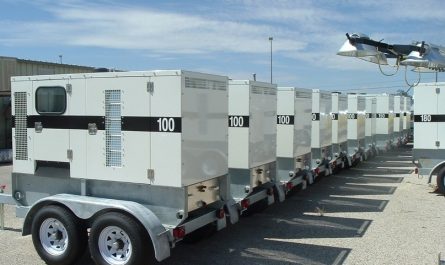Lithium-ion Batteries – The Current Leader in Stationary Storage
Lithium-ion batteries have become the dominant battery technology used in stationary energy storage systems. With their high energy density and no memory effect, lithium-ion batteries can charge and discharge multiple times without losing capacity. Over the last decade, lithium-ion battery prices have fallen dramatically, contributing to their widespread adoption. Major battery manufacturers like Tesla, Panasonic, LG Chem and BYD have driven costs downwards through advancements in manufacturing processes and economies of scale.
These lower costs have made lithium-ion battery storage economically viable for a variety of applications. Stationary Energy Storage Utilities are deploying large-scale battery energy storage systems for grid stabilization services, peak shaving and renewable energy time-shifting. Behind-the-meter storage is also gaining popularity with commercial and industrial customers looking to lower electricity bills through peak demand charge reduction and backup power provision. As lithium-ion batteries continue to improve in performance while declining in price, their role in stationary energy storage can only grow larger.
Flow Batteries – An Emerging Long-Duration Storage Solution
While lithium-ion batteries offer fast-charging capabilities well suited for short-duration energy storage applications, emerging flow battery technologies are positioning themselves as solutions for longer-duration storage needs. Unlike conventional batteries that discharge power through reversible chemical reactions, flow batteries store energy in chemical compounds dissolved in liquid electrolytes contained within external tanks. During charging and discharging, the electrolytes are pumped through a reaction cell where redox reactions occur.
This modular design allows flow batteries to easily scale in power and energy capacity independently, depending on the size of electrolyte tanks. Their rechargeability is also virtually unlimited, since the active materials generating charge can be replenished. Key flow battery chemistries under development include vanadium redox, zinc-bromine and polysulfide bromide systems. Commercial deployments are still limited but expanding, aided by multi-million dollar investments from the U.S. Department of Energy and other public agencies. Their ability to provide 10+ hours of storage makes flow batteries appealing for stabilizing intermittent renewables over longer timeframes.
Advancing Storage Options: Solid-State Batteries and Beyond
While lithium-ion and flow batteries are driving the bulk of stationary storage installations today, researchers continue working on next-generation storage technologies promising even better performance. One area generating substantial interest is solid-state batteries, which replace the flammable liquid electrolytes in conventional lithium-ion batteries with solid electrolytes like ceramics or polymers. This could allow for highly energy dense batteries that charge faster, last longer through more charge cycles, and operate safely across a wider temperature range. Several startups like Solid Power, Ionic Materials and Brighton Cross are making progress on developing solid electrolytes and cells suited for mass production.
Meanwhile, new energy storage concepts including zinc-air, magnesium-ion, lithium-sulfur and aluminum-ion batteries offer theoretical improvements over lithium-ion in either energy density or safety. Novel technologies in materials science like lithium-metal anodes and “beyond lithium-ion” chemistries hold promise, though commercialization is still many years away. Further afield, concepts based on mechanical, thermal or chemical processes like compressed air, flywheels and power-to-gas could see deployment in niche stationary storage applications where their technical attributes align well with specific use cases. The diversity of research and development efforts ensures energy storage options will only multiply in the future.
Regulatory Landscape and Market Growth Projections
As stationary storage technologies advance and costs decline, an expanding policy and economic landscape is enabling accelerated deployment worldwide. In the United States, the Federal Energy Regulatory Commission issued Order 841 in 2018 requiring grid operators to develop participation models allowing energy storage to provide grid services on a comparable basis to traditional generation resources. California has similarly implemented mandates and incentive programs spurring battery installations. Internationally, the European Union aims to install at least 3 GW of stationary storage capacity by 2023, backed by Target Model rules guiding cross-border participation.
Germany, Italy, Australia and South Korea have additional national policies supporting stationary battery deployments through targets, procurement programs and facility investment grants. Leading analyst firms project the global stationary energy storage market growing rapidly over the next decade, from less than 5 GWh of annual installations currently to 50-150 GWh per year by 2030. Utilities are expected to dominate procurement as batteries are increasingly integrated into transmission and distribution systems for grid support functions. Behind-the-meter storage will also flourish in areas with high peak demand charges and power quality concerns. The ongoing transformation of power grids worldwide is creating ideal conditions for stationary energy storage technologies to take off commercially.
*Note:
1.Source: Coherent Market Insights, Public sources, Desk research
2.We have leveraged AI tools to mine information and compile it


